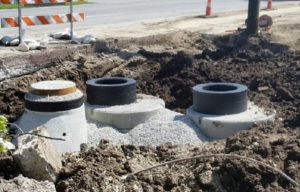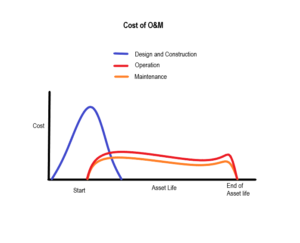Asset Management & the Value of Investing in Quality
Asset management applies to the entire life cycle of an asset, from initial conception through to the assets end of life.

It is important to understand the value of upfront investment in quality design, technologies and materials to ensure that the long term objectives of the asset investment are met.
While it is understood that we need to ensure the appropriate input from stakeholders from early on in the life cycle of a project, it is critical to understand that generally speaking, 65%-80% of the expenditure on a major asset occurs throughout the bulk of it’s lifespan through operation and maintenance activities, not just from the initial investment*. Trying to save a few dollars up front, does not mean you get the best whole of life cost or ROI.

With their access to innovative techniques, materials and products, experienced designers, consultants and contractors deliver an important role in helping asset owners get an asset that will deliver on their requirements in the long term not just provide a cheap short term result.
While an initial investment may seem high, investment in quality materials, technology and innovation during the design and construction phase can delay or offset operation & maintenance costs. This can result in a lower whole of life cost and ultimately a better return on investment for the asset owner.
Reduced operation and maintenance costs and activities can also improve the working environment for managers and operations staff as they can work more proactively in managing their assets rather than reactively dealing with unexpected failures.
These concepts apply to sewer assets from both a new construction as well as a rehabilitation perspective with the major investment being the “hole in the ground” itself.
Sewer maintenance holes (MH’s) generate a disproportionate amount of inflow and infiltration (I&I) with approximately 30% of inflow and infiltration entering through the MH structure alone.
From an operational standpoint, I&I reduces capacity of the collection system, increases pump operations and the associated increased costs of power consumption, wear and tear and treatment.
From a structural standpoint, joint failure, mortar failure, deterioration & concrete corrosion within a manhole can result in increased ingress of soil and silt, cracking of concrete rings and mortar in the MH chimney, subsidence and damage of roadways and ground surfaces.
For new assets, a small investment in suitable materials and technologies to reduce the likelihood and impact of these failures (such as with Gator Wrap external joint seal or Cretex Pro-Ring™) can delay or even prevent these failure mechanisms, resulting in a longer lasting asset that has reduced longer term operation and maintenance and hence a better Return on Investment (ROI).
For assets that are already in service, it is possible to utilise new and innovative technologies to repair and rehabilitate MH structures (such as Aqua Seal and Flex Seal Utility Sealant) that can cost effectively provide a renewed life, reduce the operation and maintenance costs and regain system capacity.
*Source – Steve Doran – Infrastream Pty Ltd, Innovation in Asset Management